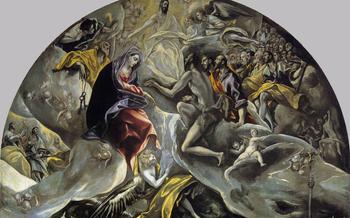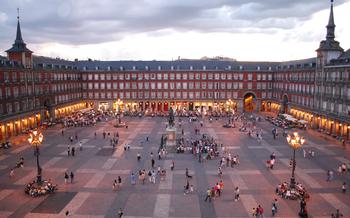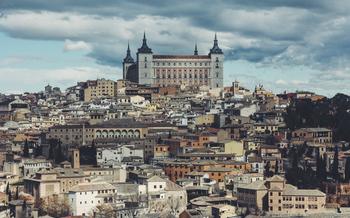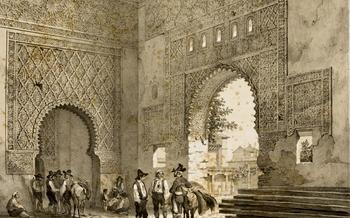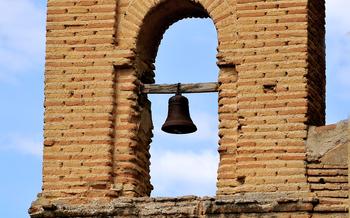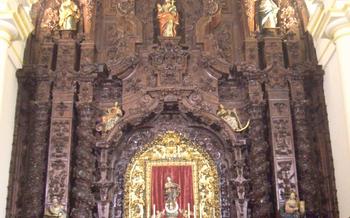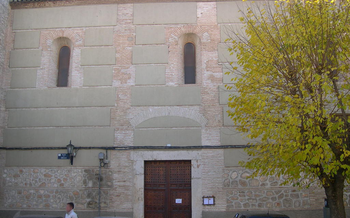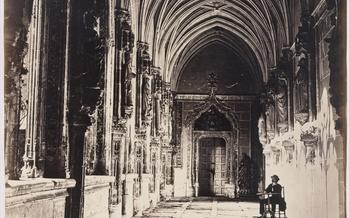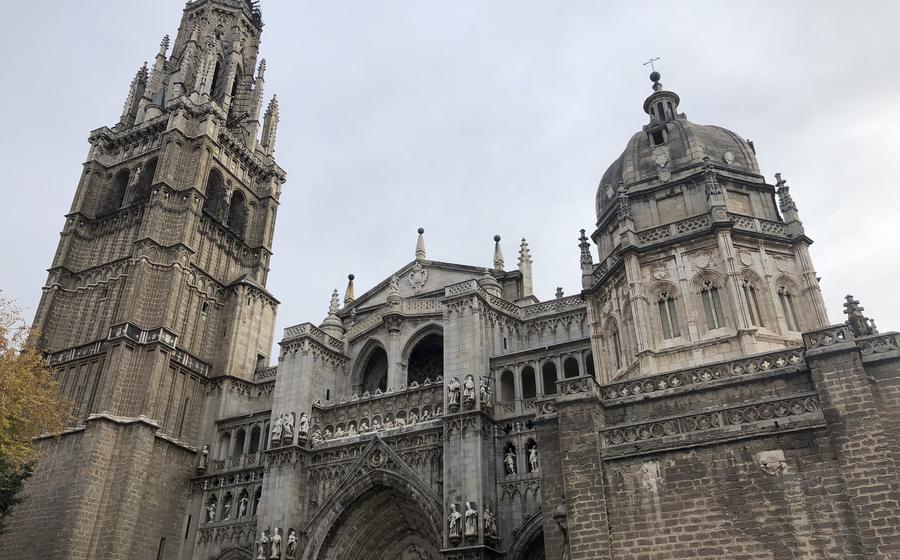
The Hermitage of San Jerónimo
- The Hermitage of San Jerónimo: An Oasis of Tranquility
- Location and Accessibility
- Historical Background
- Architectural Marvel
- Artistic Treasures
- The Legend of the Hermitage
- The Hermitage as a Place of Pilgrimage
- The Hermitage Today
- Planning Your Visit
- Activities Nearby
- Photography Tips
- Off-the-Beaten-Path Gems
- Practical Tips for Visitors
- The Hermitage's Cultural Impact
- Insider Tip: Unveiling the Secrets of the Hermitage
The Hermitage of San Jerónimo: An Oasis of Tranquility
Nestled within the serene landscapes of Toledo, the Hermitage of San Jerónimo stands as a testament to history, art, and spirituality. Constructed in the 15th century, this hermitage bears witness to the region's rich past, showcasing stunning architectural features and exquisite interior artwork. Its tranquil ambiance invites visitors to immerse themselves in contemplation and find solace amidst the bustling city.
The Hermitage of San Jerónimo boasts a remarkable blend of Gothic and Renaissance architectural styles. Its intricate stonework, graceful arches, and elegant columns create a harmonious balance between these two distinct periods. The interior of the hermitage is adorned with an array of paintings, sculptures, and frescoes, each piece narrating a chapter in the region's history and religious traditions. The harmonious fusion of architectural grandeur and artistic masterpieces evokes a sense of awe and tranquility, making this hermitage a true haven of peace and reflection.
Location and Accessibility
The Hermitage of San Jerónimo is conveniently situated just a short distance from Toledo's city center, making it easily accessible for visitors. Its exact address is Paseo del Miradero, 45004 Toledo, Spain. While the hermitage is within walking distance from the city center, the walk uphill might be challenging for some, especially during the hot summer months.
For those who prefer a more comfortable option, public transportation is readily available. Several bus lines, including lines 2, 12, and 13, stop nearby, providing a convenient and affordable way to reach the hermitage.
For those arriving by car, parking is available in the designated parking areas near the hermitage. The availability of parking spaces can be limited, especially during peak tourist season, so it is advisable to arrive early or consider alternative transportation options.
Historical Background
The Hermitage of San Jerónimo, steeped in history, was constructed in the mid-14th century, during the reign of King Alfonso XI of Castile. Its origins can be traced back to the desire of the monarch to establish a place of respite and contemplation for the Order of Saint Jerome, a religious community renowned for its dedication to a life of solitude and prayer. The hermitage was conceived as a sanctuary where the monks could find solace and commune with nature, away from the distractions of the bustling city.
One of the most notable figures associated with the Hermitage of San Jerónimo is Saint Vincent Ferrer, a renowned Dominican friar and preacher who spent a significant period of his life within its walls. Saint Vincent was known for his powerful sermons and his ability to inspire and convert thousands of people. His presence at the hermitage added to its spiritual significance and attracted pilgrims from far and wide.
Over the centuries, the hermitage underwent several renovations and expansions, reflecting the changing needs and tastes of its occupants. In the 16th century, the structure was significantly enlarged, and a new wing was added to accommodate a growing number of monks. The hermitage also underwent extensive restoration work in the 18th century, during which time its interior was embellished with intricate frescoes and decorative elements.
Despite its rich history and religious significance, the Hermitage of San Jerónimo faced a period of decline in the 19th century. The order of Saint Jerome began to dwindle, and the hermitage fell into disrepair. However, in the early 20th century, a renewed interest in preserving Spain's cultural heritage led to the restoration of the hermitage, which was declared a national monument in 193
Architectural Marvel
The Hermitage of San Jerónimo stands as a testament to the architectural prowess of its era. Constructed in the Mudéjar style, it seamlessly blends Islamic and Gothic elements, creating a unique and visually striking structure. The exterior façade captivates with its intricate brickwork, forming geometric patterns and decorative motifs that dance in the sunlight. The bell tower, a prominent feature, rises above the surrounding landscape, its delicate silhouette echoing the minarets of distant lands.
Step inside the hermitage, and you'll be greeted by a serene and awe-inspiring space. The interior features a single nave, its high ceiling supported by graceful pointed arches. The walls are adorned with beautifully preserved frescoes, depicting scenes from the life of Saint Jerome, the hermitage's namesake. These vibrant and detailed murals add a touch of color and spirituality to the otherwise austere interior.
The hermitage's integration with its natural surroundings is another remarkable aspect of its design. Perched atop a hill, it commands breathtaking views of the surrounding countryside. The hermitage seems to emerge from the landscape itself, its simple yet elegant form harmonizing with the rugged beauty of the surrounding hills.
In comparing the Hermitage of San Jerónimo to other notable structures, one might draw parallels to the Mezquita of Córdoba, with its intricate horseshoe arches and colorful tilework. However, the hermitage's smaller scale and more isolated location lend it a sense of intimacy and tranquility that is uniquely its own.
Artistic Treasures
The Hermitage of San Jerónimo is adorned with an array of artistic treasures that captivate visitors and pilgrims alike. Among the notable works are the vibrant paintings that grace the walls and ceilings of the hermitage. These paintings depict scenes from the Bible, the life of Saint Jerome, and the history of the hermitage itself. The colors used in these paintings are rich and vivid, bringing the scenes to life and creating a truly immersive experience for viewers.
The hermitage also boasts several sculptures that showcase the craftsmanship of the artists who created them. These sculptures depict religious figures, such as the Virgin Mary and Saint Jerome, and are intricately carved with great attention to detail. The skillful execution of these sculptures adds to the spiritual atmosphere of the hermitage and invites visitors to contemplate the stories they represent.
In addition, the hermitage is home to a collection of frescoes that adorn the walls and ceilings. These frescoes depict scenes from the life of Saint Jerome and are believed to date back to the 15th century. The frescoes are beautifully preserved and offer a glimpse into the artistic styles and techniques of the time. They add a sense of history and authenticity to the hermitage, making it a true treasure trove of religious art.
The Legend of the Hermitage
The Hermitage of San Jerónimo is steeped in local folklore and myths that have been passed down through generations. One of the most enduring legends tells of a young woman named Maria who lived in Toledo during the Middle Ages. Maria was known for her extraordinary beauty and kindness, and her love for the city. One day, while walking in the hills outside Toledo, she came across a mysterious hermit who lived in the Hermitage of San Jerónimo.
The hermit, a wise and holy man, recognized Maria's pure heart and invited her to stay with him. Maria accepted his invitation and soon became his devoted disciple. Under the hermit's guidance, she learned about the power of prayer and meditation, and dedicated her life to helping others.
As Maria's reputation for holiness grew, people from all over Toledo began to visit the hermitage to seek her advice and prayers. She became known as the "Lady of San Jerónimo," and her fame spread far and wide.
The legend of Maria and the hermit has been told and retold for centuries, and has become an integral part of the history of the Hermitage of San Jerónimo. It is a story of faith, hope, and the power of love, and continues to inspire visitors to this sacred site.
The Hermitage as a Place of Pilgrimage
The Hermitage of San Jerónimo is not just a historical and architectural marvel; it also holds deep religious significance as a place of pilgrimage. For centuries, pilgrims from across the region have made their way to this isolated sanctuary, seeking spiritual solace and divine intervention. The hermitage has long been associated with miracles and healings, further solidifying its status as a sacred destination.
One of the most notable traditions associated with the hermitage is the yearly pilgrimage known as the "Romería de San Jerónimo." Every September, thousands of pilgrims gather at the hermitage to celebrate the feast of Saint Jerome, the patron saint of the hermitage. The festivities include a colorful procession, folk music performances, and a mass held in the hermitage's chapel.
Over the centuries, numerous notable figures have visited the hermitage, seeking spiritual guidance or paying homage to Saint Jerome. Among them were King Alfonso VI of Castile, who visited the hermitage in the 11th century, and Saint Teresa of Avila, who sought refuge in the hermitage during her travels. These visits further cemented the hermitage's reputation as a spiritual destination of great importance.
The pilgrimage tradition has played a pivotal role in shaping the cultural and historical identity of the hermitage. The influx of pilgrims has contributed to the spread of devotion to Saint Jerome and has helped to maintain the hermitage as a center of religious activity. The pilgrimage tradition has also fostered a sense of community among the local population, who actively participate in the organization and celebration of the annual festivities.
The Hermitage Today
The Hermitage of San Jerónimo, having weathered the storms of time, stands today as a testament to its enduring significance. Currently, the hermitage primarily serves as a place of religious worship and spiritual retreat. Its tranquil ambiance and sacred atmosphere invite visitors to seek solace, reflection, and communion with the divine. The hermitage also plays a vital role as a cultural and historical landmark, attracting pilgrims, tourists, and art enthusiasts from around the world.
To preserve the hermitage's heritage and ensure its accessibility to future generations, ongoing conservation efforts are meticulously carried out. These efforts involve the restoration of artwork, the upkeep of the building's structure, and the maintenance of the surrounding grounds. Additionally, special events and activities, such as guided tours, exhibitions, and concerts, are occasionally held at the hermitage, further enriching the experience for visitors and deepening their appreciation for this unique site.
In modern-day Toledo, the Hermitage of San Jerónimo remains an integral part of the city's cultural fabric. Its serene beauty, profound history, and enduring spiritual presence continue to captivate the hearts and minds of those who seek tranquility, inspiration, and a glimpse into Spain's rich cultural heritage.
Planning Your Visit
To fully immerse yourself in the serenity of the Hermitage of San Jerónimo, careful planning is essential. The ideal time to visit is during the shoulder seasons (spring and fall) when the weather is pleasant, and the crowds are smaller. This allows you to savor the tranquility of the site without the distractions of excessive foot traffic.
The hermitage opens its doors daily from 10 am to 6 pm, providing ample time to explore its sacred spaces. Admission is free, making it accessible to all visitors. While self-guided tours are permitted, guided tours led by knowledgeable experts are available upon request. These tours offer a deeper insight into the history, architecture, and spiritual significance of the hermitage.
For visitors with disabilities, the hermitage is wheelchair accessible, ensuring that everyone can experience the beauty and tranquility of this serene oasis.
Activities Nearby
Beyond the spiritual and historical significance of the Hermitage of San Jerónimo, Toledo offers a wealth of experiences for visitors. In the immediate vicinity of the hermitage, you can explore the scenic Tagus Riverfront, offering breathtaking views and tranquil walking paths. The nearby Cristo de la Luz Mosque, a unique blend of Islamic and Christian architecture, is another must-see attraction.
For a deeper dive into Toledo's rich past, visit the renowned Toledo Cathedral, a magnificent Gothic masterpiece that houses priceless works of art and offers panoramic city views from its bell tower. The nearby Alcázar of Toledo, a former royal palace and military fortress, is another architectural gem that showcases the city's diverse heritage.
To experience the vibrant essence of Toledo, wander through the historic Jewish Quarter, with its narrow cobblestone streets, charming synagogues, and traditional artesanía shops. Indulge in the local cuisine at one of the many restaurants in the area, savoring traditional dishes like carcamusas (chickpea stew) and mazapanes (almond marzipan sweets).
Toledo's vibrant cultural scene offers a diverse range of events throughout the year. Attend a classical music concert at the Teatro de Rojas, marvel at the traditional sword-fighting spectacle of the Fiesta de la Daga, or immerse yourself in the colorful costumes and lively music of the Corpus Christi procession.
Photography Tips
To capture the essence of the Hermitage of San Jerónimo, consider these photography tips:
Best Angles and Lighting: Early morning or late afternoon light offers warm, diffused illumination that enhances the hermitage's textures and colors. Experiment with different angles to showcase the structure's unique features, such as the bell tower or the arched entrance.
Tripod Usage: A tripod ensures steady shots, especially in low-light conditions or when using a telephoto lens. This allows you to capture sharp images of the hermitage's intricate details without camera shake.
Capturing the Essence: To convey the hermitage's serene ambiance, include elements of the surrounding landscape in your composition. Incorporate the lush greenery, the meandering stream, or even the distant cityscape to create a sense of place.
Photo Editing Recommendations: Use photo editing software to enhance the colors and contrast of your images. Experiment with adjustments to bring out the warmth of the stonework or to emphasize the vibrant hues of the vegetation.
Off-the-Beaten-Path Gems
-
Hidden Corners: Venture into the secluded corners of the hermitage, where you'll find a hidden courtyard adorned with intricate carvings or a peaceful garden that invites contemplation.
-
Secret Spots: Seek out the secret passageways that lead to hidden chambers or secluded nooks within the hermitage, revealing a side of the site that few visitors get to experience.
-
Historical Anecdotes: Uncover the lesser-known historical tales associated with the hermitage, such as stories of secret meetings or hidden treasures, adding depth and intrigue to your visit.
-
Overlooked Attractions: Explore nearby attractions often missed by tourists, such as the nearby Roman ruins or the quaint village nestled in the valley below, offering a glimpse into the region's rich history and culture.
-
Local Experiences: Engage with the locals to discover unique experiences that only they know about, such as traditional festivals or culinary delights that showcase the region's authentic flavors and customs.
Practical Tips for Visitors
When visiting the Hermitage of San Jerónimo, it is essential to be mindful of appropriate attire. While there is no strict dress code, visitors should opt for modest clothing that respects the religious significance of the site. For those planning to venture beyond the hermitage's grounds and explore the surrounding natural trails, comfortable footwear is a must.
Food and beverage options are limited within the hermitage itself, so it is advisable to bring along snacks or a packed lunch if planning to spend a significant amount of time there. There are no restaurants or cafes on-site, but several charming eateries can be found in the nearby village of San Jerónimo.
Restroom facilities are available within the hermitage, ensuring the convenience and comfort of visitors. For those with limited mobility, the hermitage is wheelchair accessible, and strollers are also permitted. The staff is friendly and accommodating, ready to assist visitors with any questions or needs they may have.
The Hermitage's Cultural Impact
The Hermitage of San Jerónimo has played a pivotal role in shaping the cultural landscape of Toledo. Its unique architectural style and rich history have served as a source of inspiration for generations of artists, writers, and musicians. The hermitage's serene ambiance and spiritual significance have attracted numerous pilgrims and visitors, fostering a sense of cultural exchange and understanding.
The hermitage's architectural features have been admired and studied by architects and historians, who have marveled at its innovative design and harmonious integration with the surrounding landscape. Its unique blend of Gothic, Renaissance, and Mudéjar elements has made it a subject of fascination for scholars and enthusiasts alike.
The hermitage has also been a muse for writers and poets, who have found inspiration in its tranquil atmosphere and poignant history. Its serene setting and spiritual aura have provided the backdrop for countless stories, poems, and literary works. The hermitage's enduring legacy as a place of contemplation and reflection continues to captivate the imaginations of creative minds.
In addition to its profound impact on the arts, the Hermitage of San Jerónimo has played a crucial role in promoting cultural tourism and exchange. The hermitage's unique heritage and architectural significance have made it a must-visit destination for travelers from around the world. Its inclusion in various cultural itineraries has contributed to the promotion of Toledo's rich cultural heritage and fostered a sense of understanding and appreciation among visitors from diverse backgrounds.
Insider Tip: Unveiling the Secrets of the Hermitage
-
Hidden Chamber: Explore the inconspicuous door near the main altar, leading to a concealed chamber that once served as a refuge for monks during times of persecution.
-
Unique Perspective: Climb the spiral staircase to the bell tower for a breathtaking panoramic view of Toledo's skyline, including iconic landmarks such as the Alcázar and the Cathedral.
-
Tranquil Gardens: Stroll through the serene gardens adjacent to the hermitage, offering a peaceful oasis amidst the bustling city. Look out for the ancient olive trees, said to be over 500 years old.
-
Local Delicacies: Indulge in traditional Spanish cuisine at the nearby Venta de Aires restaurant, known for its mouth-watering dishes like "carcamusas" (chickpea stew) and "perdiz estofada" (stewed partridge).
-
Pilgrimage Path: Embark on a spiritual journey by following the ancient pilgrimage route that leads to the hermitage from the city center. Experience the tranquility and introspection felt by pilgrims throughout history.
